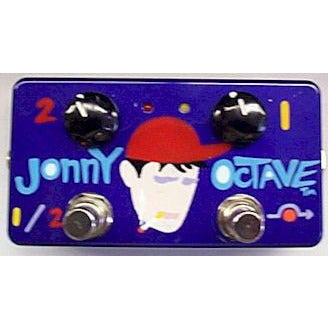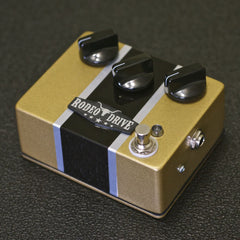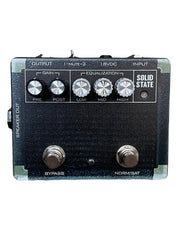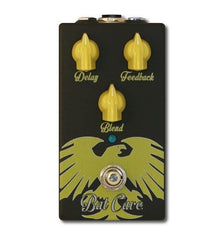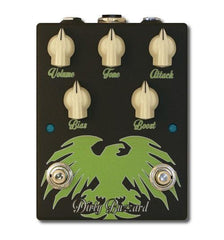Welcome To Steve's Music Center !
Z. Vex Jonny Octave (Zvex)
ZVEX
All Z. Vex pedals are hand painted and hand assembled, and each is unique. The pedal you purchase may vary in appearance from this stock photo.
| Description: |
|
The Jonny Octave is an octave-up pedal designed to raise the apparent pitch of single notes on your guitar by one or two octaves. The controls are, from left to right, Octave 2 Volume and Octave 1 Volume. The two switches are, from left to right, Octave 1/Octave 2 selector switch and True Bypass switch. There are also trim pots on the inside for gain stage control. |
|
What it does and features it has:
Welcome to the rather wacky world of analog octave, Z.Vex style. The Jonny Octave! This pedal will convert your guitar’s output signal to either one octave up or two octaves up, but only under the right circumstances. This tutorial should help you achieve the best octave sound. First of all, it’s helpful to understand just how analog octave-up circuits work. Nearly all of them operate on the same general principle, that of full-wave rectification. What’s that? Well, it looks something like this: Z. Vex starts with a very simplified wave representing your guitar’s string swinging back and forth once. This is what the output of your guitar would look like with your NECK pickup and a note struck near the 12th fret (where analog octave-up circuits get their best sound):
The Jonny Octave boosts that signal, runs it into a phase-splitter (you don’t need to understand that part) and then puts it through a full-wave rectifier, something like a ring-modulator, and sends the result through a transformer. That takes the lower half of the wave and flips it up over the middle. Then it looks like this:
Note how it got smaller. There’s a gain stage to boost it back up after that. Count how many peaks and valleys it has now... the sine wave in figure 1 had only one peak and one valley. In the same period of time, the new waveform (1 octave up) has two peaks and two pointy-looking valleys, or two times the frequency. Does it sound clean? Not really, but it isn’t fuzzy, it’s more like half smooth and half pointy, which sounds slightly jaggedy. For the 2nd octave up, the Jonny Octave does it again!
It got smaller again... once again, there’s a gain stage to boost it back up. Now it’s really funny-looking, and it sounds pretty strange too, but if you count the peaks and valleys, it’s got 4 of each, making it two octaves higher (4 times the original frequency). Some things you can do to help make the octaves stand out are:
Your Jonny Octave comes with 4 trimmer controls inside that are arranged like this:
|
|
Circuit Block Diagram:
The circuit block diagram below shows where these trimmers come into play. Each one controls a gain stage.
|
If you decide to experiment with the gain controls, to increase sustain or adjust the drives for your playing style, be sure to look closely at the white screwdriver adjustments and find the triangular arrows, and mark the original factory positions with a sharp-pointed marker first. This illustration shows the original factory positions in case yours needs to be restored and there are no marks. The drive controls drive the octave generators. They can be adjusted for how hard you hit the strings. The gain controls set the maximum output level for each octave. If these are set very high, they will distort. I usually set them so that when the volume controls on the front of the unit are in the middle, the octaves are about as loud as the original clean guitar, but feel free to set them where you derive the happiest vibe. Octave on!
